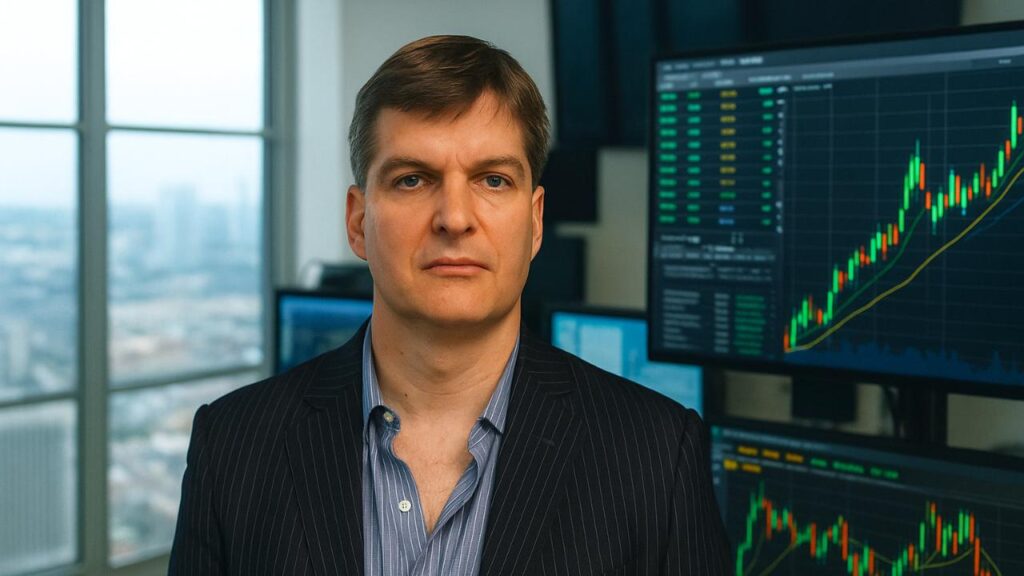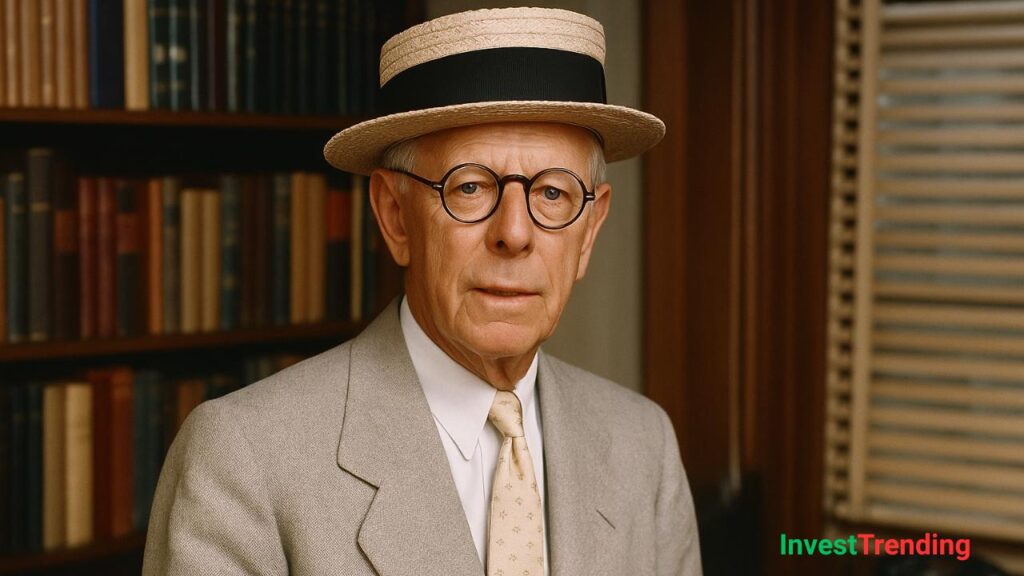
Michael Burry is not your typical Wall Street investor. Born on June 19, 1971, in San Jose, California, Burry is famously known for predicting the 2008 housing market crash—a move that made him one of the most respected and controversial figures in finance. With a background in medicine and a mind made for numbers, Burry’s rise in the stock market world is a true testament to the power of independent thinking and deep research.
Background and Family
Burry faced adversity early in life. As a child, he lost his left eye to retinoblastoma, a rare form of cancer. He wore a prosthetic eye from age two. Raised in a middle-class family in Silicon Valley, he showed an early interest in books, science, and numbers. He pursued a degree in economics and pre-med at UCLA, followed by an M.D. from Vanderbilt University School of Medicine. Despite being a doctor, Burry’s true passion lay in analyzing financial markets.
Burry was a quiet, introverted child. He spent long hours reading and developed a keen analytical mind. He has shared in interviews that he believes he falls on the autism spectrum, which may have contributed to his intense focus and pattern recognition skills—key traits that later helped him in financial analysis.
The Beginning of His Journey
While completing his residency at Stanford Hospital, Burry spent his nights analyzing stock markets and sharing his detailed value investment ideas on message boards like Silicon Investor. His posts gained attention from prominent investors, including Joel Greenblatt, who would later seed his hedge fund.
In 2000, Burry left medicine to found Scion Capital, named after his father’s car brand. He started the fund with personal savings and investments from family, friends, and Greenblatt. That same year, the dot-com bubble burst. While the S&P 500 struggled, Burry’s portfolio returned a whopping 55% in 2001, proving his ability to spot undervalued stocks.
The Turning Point
The real turning point came in 2005 when Burry identified a massive flaw in the U.S. housing market. While others trusted rising home prices, Burry dug into mortgage bond prospectuses and noticed alarming trends—lenders were giving high-risk loans with little oversight. He believed these subprime mortgage-backed securities were destined to fail.
He used credit default swaps (CDS)—a relatively obscure financial instrument—to bet against the housing market. His clients were skeptical, and some even threatened legal action. Yet, Burry held firm.
In 2008, the housing market collapsed. His strategy paid off enormously, netting profits of $725 million for investors and $100 million for himself.
“What you want to watch are the lenders, not the borrowers… When they lose [restraint], watch out.” — Michael Burry, The Big Short, by Michael Lewis
Investment Strategies and Tools
Burry’s investment philosophy is rooted in deep value investing. He follows the teachings of Benjamin Graham and focuses on:
- Undervalued assets with strong fundamentals
- Margin of safety as a core principle
- Independent research, often reading full financial documents
He is known for being a contrarian—acting against market sentiment when he believes data supports his view.
His tools and techniques include:
- SEC filings and detailed bond prospectuses
- Credit default swaps (CDS) for macroeconomic plays
- Fundamental analysis over technical indicators
Burry also avoids distractions from mainstream media. He once said he doesn’t watch CNBC or other market news because it often amplifies noise instead of substance. His approach is highly research-driven, relying on raw data instead of headlines.
Real Investment Wins
- 2001: While the market plummeted post-dot-com, Burry’s Scion Capital gained 55%
- 2005–2008: Bet against subprime mortgages with CDS; generated over $700 million in profit for clients
- GameStop (2019): Bought 3.4 million shares when the stock was under $5; sold before the meme frenzy but gained early attention for his foresight
- Overall Performance: From 2000 to 2008, Scion Capital returned 489% to investors, vastly outperforming the S&P 500
Recognition, Innovation, and Influence
After closing Scion Capital in 2008, Burry took a break from public investing. He later returned with Scion Asset Management in 2013, investing in water, gold, and select equities. In 2019, he gained attention for investing in GameStop, long before the meme stock frenzy began.
Michael Burry’s life and predictions were immortalized in Michael Lewis’s book The Big Short, later adapted into a 2015 Oscar-winning film where he was portrayed by Christian Bale.
He is known for his minimalist lifestyle and disdain for unnecessary financial jargon. Burry keeps a small, focused portfolio and avoids over-diversification—believing that it dilutes conviction and performance.
Key Lessons for Readers
Burry’s journey offers powerful insights:
- Think independently: Don’t follow the herd—do your own research.
- Be patient: Markets often take time to reflect reality.
- Look deeper: Real value is found in places others overlook.
- Trust data, not hype: Emotions drive markets, but data drives truth.
- Don’t fear being early: Being early is not the same as being wrong.
- Avoid overexposure: Concentrated positions backed by research often outperform overly diversified ones.
Quote Highlight
“I try to buy shares of unpopular companies when they look like road kill and sell them when they’ve been polished up a bit.” — Michael Burry, interview with New York Magazine, 2010
“Lost dollars are simply harder to replace than gained dollars are to lose.” — Michael Burry, as quoted in The Big Short, by Michael Lewis
“Rationality is not measurable by outcomes, but by the reasoning behind decisions.” — Michael Burry, Scion Capital investor letter (2006)
📚 Suggested Reading for Deeper Market Insights:
- Want to understand the origins of value investing? Read about Benjamin Graham – The Father of Value Investing: Timeless Strategies and how his principles influenced legends like Warren Buffett — and even Michael Burry himself.
- Curious how traders thrive in uncertainty? Discover Nassim Nicholas Taleb: The Trader Who Profited from Chaos, whose bold ideas around randomness reshaped modern risk thinking.
- Inspired by visionary investors? Explore Cathie Wood’s Financial Journey from early setbacks to becoming a pioneer in disruptive innovation investing.
- Learn from Silicon Valley’s bold voice in finance — Chamath Palihapitiya: A Realistic Journey to Investment Success in Stocks and Crypto — a story of disruption, risk, and calculated conviction.



